The Northern Weekly Salvo
Incorporating Slaithwaite Review of Books, Weekly Notices, Sectional Appendices, Tunnel Gazers’ Gazette etc. Descendant of Teddy Ashton’s Northern Weekly and Th’Bowtun Loominary un Tum Fowt Telegraph
Published at 109 Harpers Lane Bolton BL1 6HU email: paul.salveson@myphone.coop
Publications website: www.lancashireloominary.co.uk
No. 307 October 23rd 2022
Salveson’s half-nakedly political digest of railways, tripe and secessionist nonsense from Up North. Sometimes weekly, usually not; definitely Northern.
Dear, oh dear….
Can anything more be said about the current political mess? Probably not and The Salvo always sticks to its firm principles of unbiased objectivity in its relentless pursuit of truth. I have to say I always thought it would end badly for Truss, though nobody could have foreseen things reaching such a pass quite so quickly. Watching the disintegration of what was once (love them or loathe them) a major political party with a seemingly unassailable grip on power makes for a fascinating spectator sport. But never underestimate the Tories’ ability to recover.Writing on an appropriately damp and dismal Sunday afternoon, it’s sounding like we’ll have a new Prime Minister by next Friday. Maybe it’s some kind of elaborate joke but it looks like Boris Johnson will stand. Have the Tories really gone completely insane? Looking back on Johnson’s reign as PM it wasn’t all completely bad (he was actually pro-rail and pro-cycling) but he went because he had lost trust of his own party and the country as a whole and laid the ground for something far worse. To have him back would be an astonishing act of collective suicide by the Tories (go on, make my day…).As I’ve said before, if I was a Tory I’d want Sunak as leader. He might just pull them back from the abyss and present a credible, but fatally weakened, alternative to Labour in 2024. Penny Mordaunt might do it – she performed well in PM’s Questions when Liz Truss was hiding somewhere. Labour will be piling on the pressure to hold a General Election, and that’s fair enough. But it isn’t going to happen until it has to. In the meantime, we’re stuck with whoever the Tory party membership think is a ‘suitable’ leader, which is a chilling thought.
Coming back to reality, this issue of The Salvo includes some thoughts on Labour and its transport policies, reflections on regional sensibilities, as well as various trips and events.
Transport policy: back to the 70s?
Every aspect of government policy is in a state of chaos and transport is no exception. Truss was already proving to be a disaster for transport, pursuing a pro-roads policy that was threatening to take us back to the 70s. What will emerge from the current shambles is anyone’s guess though one potentially positive outcome might be the scrapping of HS2 in its current form, at least north of Birmingham (see below). What I’d like to focus on here are the opportunities for Labour in crafting an intelligent transport policy which is both deliverable and goes beyond the simplicities of ownership. We’ve had the experience of several train companies and it’s debatable whether their performance has been that much better than the private operators. Success, failure or just mediocre performance is not reducible to whether a company is publicly owned or not.
Labour is already doing some quite exciting things on transport, in Wales and the Labour-controlled ‘combined authorities’ across England, particularly Liverpool, Greater Manchester, South and West Yorkshire and Tyne and Wear. West Midlands is an interesting case – a combined authority with a Tory mayor who is doing many of the
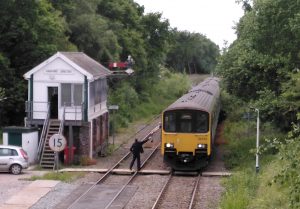
things you’d expect a Labour authority to do. What the combined authorities and the devolved nations demonstrate is that any future UK-wide transport policy must recognise the complex and diverse world which we’re now in, with mayoral combined authorities getting on and doing positive things with scope for doing more if they had the powers. Greater Manchester has already taken control of the bus network, reduced fares and wants to take control of stations. Labour has got to learn from these achievements and avoid the danger of going for a centralised approach in which the regions are side-lined.
This means ceding power to regional bodies within England (which Scotland and Wales already have). It doesn’t make sense for local transport to benefit from strong combined authorities while neighbouring shire counties or poorly-resourced unitary authorities struggle on as best they can. The starting point for building a dynamic local and regional transport system, making the most of rail, bus and light rail, is having the right structures in place. The most sensible approach is to extend the existing ‘combined authorities’ beyond their current boundaries to create a system of English regional government, which have elected authorities (rather than just elected mayors) in control. For example, the existing Greater Manchester authority should extend northwards to include what remains of ‘Lancashire’ – and perhaps re-christen it ‘Lancastria’. Neighbouring Liverpool city region could take in a wider area.
If the right structure is in place, the regions could make a big difference. Experience has already shown that some good things can happen even with existing relatively limited powers. Whilst Greater Manchester has majored on bus policy, neighbouring Liverpool has gone out and bought a whole fleet of new trains to operate on its Merseyrail network. This has resulted in getting trains that are one third cheaper than if the authority had relied on ‘the market’, i.e. the rolling stock leasing companies. They have also got new trains that are more passenger-friendly, the result of detailed consultation with passengers.
The next step is fairly obvious, and again Liverpool and Wales already offer a model, being directly responsible for the local rail network.
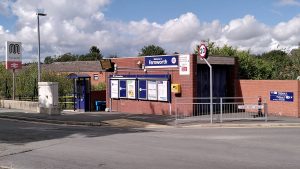
Liverpool has long had responsibilities for franchising local services on the Merseyrail network but has only been able to contract with a private operator (Serco and Abellio). Wales, however, has taken its domestic passenger services in-house with a train operator owned by the Welsh Government. So has Scotland under its SNP government.
A Labour secretary of state for transport needs to support these initiatives and resist the temptation to re-create ‘British Rail’. There needs to be a national network with a publicly-owned system operator which controls the network and sets timetable parameters. It makes sense for Network Rail to continue in this role, whatever it’s called (and it looks like ‘Great British Railways’ has been consigned to the sidings). Try experiments in vertical integration: in some areas Network Rail could partner with a train operator to provide a more unified rail operation which avoids some of the costs of duplication. It could work in regions such as Merseyside and West Midlands.
With longer distance InterCity services there is scope for looking at a range of social ownership options, ranging from state – owned route-based companies, such as we already have with LNER on the East Coast Main Line, to co-operative structures, e.g. for Great Western or the troubled West Coast Main Line, with employee and passenger ownership options. An incoming Labour government could do these things quite quickly and ensure long-term stability and investment which is what the railways desperately need. Leave freight alone, other than incentivising the operators through continuing low track access charges and capital grants for wagons and terminals which could be managed (or owned and sub-let) by local authorities.
Compared with rail, buses are easy and offer perhaps the biggest immediate gains. Franchise local networks but encourage social and
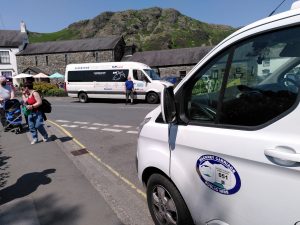
municipal ownership – a few bus companies are still owned by local authorities and are doing very well. Finally, the big overarching issue must be reducing dependence on the car, if we’re serious about really addressing climate change and making our towns, cities and countryside more liveable places. Again, it’s at the local and regional level where the big difference can be made.
This article is based on my ‘Points and Crossings’ piece in the forthcoming issue of Chartist magazine – see www.chartist.org.uk
HS2: For or against?
I’ve made no secret of my opposition to HS2 as it is currently conceived, and nothing has happened to make me change my mind. I’m not against ‘high-speed rail’ as such and would like to see a ‘high-speed’ network including London to the Midlands, North-West, North-East and the central-belt of Scotland, with a fast west-east route. It doesn’t have to be very high-speed and must be fully connected with the existing network. There’s every likelihood that HS2 will stop dead in its Curzon Street tracks (i.e Birmingham), a victim of Hunt’s spending cuts. Labour needs to commit to a fundamental review of high-speed rail as part of a wider review of future rail development. With that, the currently ‘stopped’ Great British Railways project should be revived, maybe with a less naff title, but acting as ‘guiding mind’, system operator and more.
Lancastrians: coming out next year!
Over the last year I’ve been working on a big project: a social and cultural history of Lancashire – the ‘historic Lancashire’ not the butchered remnants of what it is today. Lancastrians: Mills, Mines and Minarets is being published by the highly-respected publishers Hurst whose catalogue for next year is well worth a look at it. See https://www.hurstpublishers.com/catalogues/spring-summer-2023/. The page on Lancastrians says: “This long-overdue popular history explores the cultural heritage and identity of Lancashire. Paul Salveson
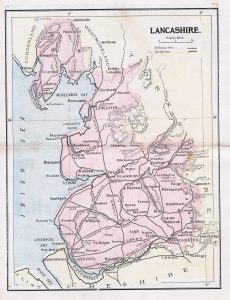
traces to the thirteenth century the origins of a distinct county stretching from the Mersey to the Lake District—‘Lancashire North of the Sands’. From a relatively backward place in terms of industry and learning, Lancashire would become the powerhouse of the Industrial Revolution: the creation of a self-confident bourgeoisie drove economic growth, and industrialists had a strong commitment to the arts, endowing galleries and museums and producing a diverse culture encompassing science, technology, music and literature. Lancashire developed a distinct business culture, its shrine being the Manchester Cotton Exchange, but this was also the birthplace of the world co-operative movement, and the heart of campaigns for democracy including Chartism and women’s suffrage. Lancashire has generally welcomed incomers, who have long helped to inform its distinctive identity: fourteenth-century Flemish weavers; nineteenth-century Irish immigrants and Jewish refugees; and, more recently, New Lancastrians from Asia, Africa and Eastern Europe. The book explores what has become of Lancastrian culture, following modern upheavals and Lancashire’s fragmentation compared with its old rival Yorkshire. What is the future for the 6 million people of this rich historic region?”
The book will be published in June 2023 in hardback, price £25.
Developing a ‘Lancashire Sensibility’
A central part of the book’s argument is that we need to revive a ‘Lancashire Sensibility’ which is forward-looking and inclusive – and takes in the whole of ‘historic Lancashire’. To do that, we need to go back before we can go forward and look at how a ‘Lancashire sensibility’ emerged in the past. It was a central part of regional identity and took in speech, dress, manners, diet – pretty much every aspect of how we lived. In 1951 the (Labour) Minister of Education, George Tomlinson, wrote the foreword to the journal of the newly-established Lancashire Dialect Society:”I have a feeling that we cannot afford to lose the characteristic features of our County, which are bound up in no small degree with the accents of its people and our own particular dialect… for since I became a Minister of the Crown, in every part of the country people have come to me at the end of a meeting, shaken me by the hand and said, ‘I too come from Lancashire,’ and it was grand to hear the accent again.
The ‘Lancashire sensibility’ was very much a part of the social and intellectual make-up of most sections of society by the middle of the

nineteenth century. It included much of the aspiring middle class, sections of the aristocracy and some ‘respectable’ working men. Women were included, and the leader of the women’s suffrage movement Emmeline Pankhurst was always fond of stressing her ‘Lancashire’ roots.
It linked with the idea of a ‘Lancashire Patriotism’ which emerged in the 1880s. Speaking in the middle of the First World War, Rossendale Liberal politician and historian Samuel Compston said that “if patriotism is a virtue, especially in these days, surely county clanship, in no narrow sense, is a virtue also.”
An essential part of the ‘Lancashire sensibility’ was the emergence of a distinctive ‘intelligentsia’ which provided a network of influential figures. The Manchester Literary Club, founded in 1862, was central to this. Its aims were to “encourage the pursuit of literature and art; to promote research in the several departments of intellectual work and to protect the interests of authors in Lancashire; to publish from time to time works illustrating or elucidating the literature and history of the county…”
A typical member was Samuel Barlow, a partner in a bleach works at Stakehill near Middleton. As well as being an active member of the Manchester Literary Club he was a founder of the city’s Arts Club, an artist and botanist and had a strong interest in Lancashire dialect. William E.A. Axon was another prominent member with wide interests. He became a central figure in Manchester – and Lancashire – intellectual circles towards the end of the nineteenth century. In 1874 he joined the staff of The Manchester Guardian as its librarian. He had already been writing for the Guardian, and used his pen in support of the anti-slavery cause during the American Civil War.
Lancashire developed a number of cultural associations which provided a network for the county’s intellectual communities. The Historic Society of Lancashire and Cheshire was founded in Liverpool in 1848. The Lancashire Authors’ Association (for ‘writers and lovers of Lancashire literature’) was established in 1909 on the initiative of Allen Clarke. Its Library was created in 1921 from members’ donations and is now the largest collection of regional literature in the UK. It is housed as a special collection in the University of Bolton Library.
The Manchester Section of the Society of Chemical Industry seems an unlikely body to take a broad view of culture in Lancashire. However, in 1928 the Society was instrumental in commissioning The Soul of Manchester, to mark the Society’s Manchester meeting the following year. The Earl of Crawford and Balcarres (also vice-president of the Lancashire Authors’ Association) contributed the introductory essay on ‘The Soul of Cities’ in which Manchester is clearly positioned as the county ‘capital’ but very much a part of Lancashire.
The Co-operative Movement came closest to providing an intellectual framework for working class men and women in the years between the 1850s and 1960s. It was a network of local, independent, societies. The larger ones had substantial libraries, reading rooms and lecture theatres, with frequent lectures by eminent speakers, often on aspects of Lancashire history and culture.
The post-war years saw the coming of mass entertainment, particularly television – which was less suited to a more regional culture. Was it, finally, the beginning of the end that had been forecast for so long? Actually, no. Go to schools in many parts of Oldham, Rochdale or Bolton and you will hear young Asian as well as white English children speaking ‘broad Lanky’. After its demise being forecast for many decades, it refuses to die, and with it that broader sense of ‘being Lancashire’. We need a revived Lancashire sensibility that is about more than just dialect and speech, embracing culture in a general sense. We already have Friends of Real Lancashire and the Lancashire Society flying the flag of the red rose. We need to up our game and tap into people’s continuing sense of identity which is at risk of being subsumed into the amorphous city-regions. A campaign to re-unite and re-imagine Lancashire needs a higher profile and cross-party support.
A reformed Lancashire within its historic boundaries makes sense as a regional economic unit but also chimes with people’s identities – in a way that artificial ‘city regions’ never will. People in Bolton, Oldham, Rochdale and other towns don’t want to become mere commuter suburbs of Manchester. Nearly 50 years on from the creation of ‘Greater Manchester’ the ‘city region’ still has little legitimacy and if there was a referendum tomorrow on being part of Lancashire or ‘Greater Manchester’ I have little doubt about the result. There is an alternative – a greater ‘Lancastria’ that celebrates all our county, not just the main cities. A starting point must be the re-creation of that ‘Lancashire Sensibility’ which was so much a part of life in the last century.
This article is based on a similar piece which will appear in The Lancastrian, the magazine of Friends of Real Lancashire. See www.forl.org.uk
Let’s go to….Heywood
Heywood is not on most people’s tourist maps but there is more to it than you might think. It is a former cotton town and had its own local government before 1974, when it was absorbed into Rochdale. It’s known as ‘Monkey Town’ for obscure reasons. Its most obvious attraction is the East Lancashire Railway, whose line from Bury terminates on the edge of town. A good itinerary, when services are operating, is to walk down from the station into the town centre and
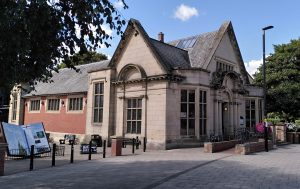
have a look at the excellent Carnegie Library, which has displays on the town’s history and the library itself. Nearby is the covered market with a selection of small businesses including a cheese shop, selling delicious Lancashire cheese (which Marks and Spencer’s in Bolton don’t!). The town has close links with the Rochdale Pioneers. One of its leading figures, Charles Howarth, was born in Heywood and is buried there. Like many small towns, Heywood had its own co-operative society which possessed a highly-acclaimed library. Like most co-op libraries, the society donated its collection to the new municipal library when it opened in 1906.
Heywood Corporation was rightly proud of Queen’s Park which opened to great acclaim in 1879 and was subsequently extended. It remains a popular place to wander round with a fine lake and woodland walks, with a cafe. The opening celebrations, on August 2nd 1879, were
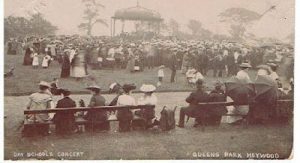
impressive. The participants represented a cross-section of Heywood society, probably at the height of its prosperity. About 10,000 people took part in the procession, led by six companies of the 8th Lancashire Rifle Volunteers and their band, followed by local Sunday Schools, with flags, banners and more bands. There were 4,000 marchers in the ‘Noncomformist’ section alone and large contingents from other schools. Behind the children were dignitaries in carriages, including the High Sheriff and Colonel Thomas E. Taylor, M.P. and ‘Chancellor of Her Majesty’s Duchy and County Palatine’, accompanied by a troop of the Duke of Lancaster’s Yeomanry. As the representative of the Queen, Taylor was responsible for handing over the keys of the park to the Local Board. Serving and former members of the Heywood Local Board were next in the parade, in private carriages, followed by the ‘friendly and trade societies’. The Heywood Handbell Ringers ‘rang out a merry tune as they went along’ and the Waterworks Department followed with their float drawn by six horses. Behind them were several horses carrying specimens of coal from various local collieries. There followed floats displaying industrial machinery of local manufacturers, including steam boilers, carding engines and woollen looms. There were also wagonloads of flour, limestone, ‘bleached waste’, brushes, freshly-butchered pigs, and tinplate. At the rear was a ‘mounted masquerade, representing Henry the Eighth, Charles the Second, a courtier, a jester, a brigand, and a Russian bear. (Report in The Heywood Advertiser).
The real glory of Heywood is its industrial heritage, particularly the surviving Mutual Mills, close to Queen’s Park. The name reflects the democratic ownership of many of the great Lancashire spinning companies. The four buildings are lying semi-derelict but represent probably the finest group of cotton
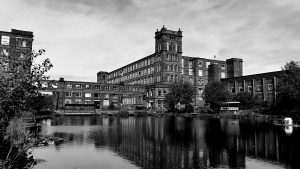
spinning mills in Lancashire (and Heywood is in Lancashire!). There have been plans to convert them into apartments but nothing seems to be happening at present, but happy to be proved wrong. If you walk away from the mill gates towards the main road you’ll come to another gem – the Engineer’s Arms. The pub is currently empty and available for lease. It is the only pub I’ve ever come across which has a trade union emblem for its sign, from the Amalgamated Society of Engineers. The signage outside is 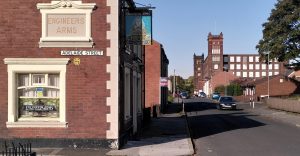 superb and I very much hope whatever becomes of the pub its heritage features will be protected.
superb and I very much hope whatever becomes of the pub its heritage features will be protected.
Crimble Mill is another really interesting survivor, nicely situated on the River Roch. Makes for a nice walk from Queen’s Park returning via Mutual Mills. It’s currently semi-derelict but there are plans to revive it, so I’m told.
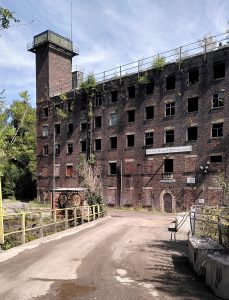
The last place of note is another pub. ‘The Edwin Waugh’ is in the centre of town and celebrates Lancashire’s great dialect writer who spent much of his life in nearby Rochdale, and was fond of a pint himself. It’s a Wetherspoon’s and there’s plenty inside about the life and writings of ‘The Lancashire Burns’. Heywood is served by the 471 bus 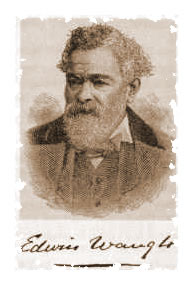 (Bolton – Bury – Rochdale) and the 163 (Bury – Middleton – Manchester). But how I miss the train that ran from Rochdale via Heywood, Bury and Radcliffe to Bolton. You can still get steam haulage on the East Lancs, and who would have thought in 2022 you’d be able to travel behind a Southern Pacific or an LNER A4 from Heywood to Bury?
(Bolton – Bury – Rochdale) and the 163 (Bury – Middleton – Manchester). But how I miss the train that ran from Rochdale via Heywood, Bury and Radcliffe to Bolton. You can still get steam haulage on the East Lancs, and who would have thought in 2022 you’d be able to travel behind a Southern Pacific or an LNER A4 from Heywood to Bury?
There are aspirations for a more modern rail service, led by Rossendale Council. It’s highly contentious with the East Lancashire Railway management but involves using ELR infrastructure to run a commuter service from Rawtenstall via Ramsbottom, Bury and Heywood to Manchester. Personally (and I’m a member of the preservation society) I’d like to see it happen, and I’m sure it could with goodwill and give-and-take on all sides.
Last Train from Blackstock Junction has now arrived
It’s out – my new book comprising 12 short stories about railway life in the North. Last Train from Blackstock Junction has a very kind foreword by Sir Peter Hendy, chairman of Network Rail, who said “As you read these stories, you’ll find some history, some romance, some politics, a little prejudice – sadly – and some humour; you will in fact be in the world of railway men and women. I hope you find them as absorbing as I did when I read Paul’s manuscript. Please enjoy his work!”
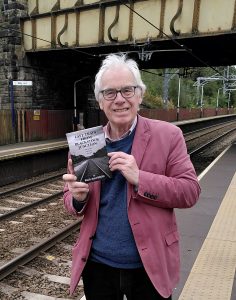
Writer and environmentalist Colin Speakman said “it is an amazing collection – powerful, moving, and what I would call ‘faction’ which tells truths even though the details may be fantasy, ‘Hillary Mantel school of history’ perhaps. Director of Platform 5 Publishing, Andrew Dyson, said “Paul’s stories provide a fascinating insight into what life was really like for thousands of railway workers.”
The tales include a ghost story set in a lonely signalbox in Bolton, in 1900, which some Salvo readers may remember from Christmas’s past. Other stories are about life on today’s railway, including ‘From Marxist to Managing Director’ – the story of a young female political activist who ends up running a train company. Some are set in the ‘age of steam’ and life on the footplate as well as the rise of the trades unions on the railways and the rise of the Labour movement. The title story, ‘Last Train from Blackstock Junction’, is set at the time of the Beeching cuts in the 60s and is about the attempts of a group of young boys (no names, at least real ones, mentioned) to save their local station.
Salvo readers will get the book at a specially discounted price, courtesy of Platform 5 Publishing. Go to https://www.platform5.com/Catalogue/New-Titles. Enter LAST22 in the promotional code box at the basket and this will reduce the unit price from £12.95 to £10.95.
The three launches (Elsecar, Bolton and Carnforth) all went well and I’m giving talks to a number of other groups over the next few weeks.
Dave Burnham
It’s with great sadness that I have to report the death of writer and historian Dave Burnham at the age of 71. Dave did much to popualrise Bolton’s history, in particular the contribution of novelist Bill Naughton.His most recent book was Bolton A – Z. My condolences to Linda and all of Dave’s family and friends.
Small Salvoes
- Bolton and the South-East Lancs Community Rail Partnership had a good night at the annual Community Rail Awards, held at Manchester Central on October 6th. The ghost of ‘Seahorse’ must have been there, ready to depart on the fabled 17.22 to Buxton, as guests took their seats. Great to see Julie Levy getting the award for ‘outstanding volunteer contribution’ and Richard Watts of Community Rail Lancashire receiving the lifetime achievemnt award. SEL CRP won a first proze for its Wigan Mural project, led by Steph Dermot and Julie Levy. Also great to see Kents Bank and its Friends winning second-prize in the station adoption category. The full list of awards is at www.communityrail.org
- Lest readers think The Salvo is too heavily weighted towards the sunny side of the North of England, here’s a further plug for Colin Speakman’s esxcellent Yorkshire – Ancient Nation, Future Province, published by Gritstone. See www.gritstonecoop.co.uk
- A recent expedition to Fleetwood featured a visit to the excellent community-run museum which has a fibne display of artefacts and information about the the town’s fishing indusrtry. There’s a superb banner from the local Women’s Co-operative Guild featuring a trawler out at sea. The cafe is recomemnded (try the crumpets with Lancashire cheese) and the second-hand bookshop next door has a good selection of fiction and non-fiction. All proceeds go to helping the museum. Roll on bringing back the railway!
Talks, walks and wanderings
Following the ‘official’ end of the Pandemic, I’ve been getting a number of invitations to give talks on various topics. Recent talks have included ‘The Social History of Lancashire’s Railways’ for Preston Historical Society, ‘Allen Clarke’s Bolton’ for Friends of Smithills Hall and Bolton U3A, ‘Railways and Railwaymen of Turton’ for Turton LHS, ‘Moorlands, Memories and Reflections’ for What’s Your Story, Chorley? and ‘Railways and Communities: Blackrod and Horwich’, for Blackrod LHS. I’m speaking on ‘Railways in the North’ for the Stephenson Locomotive Society in Manchester on November 5th. The following Saturday I’m at Shap Wells talking to the Cumbrian Railway Association on the Settle-Carlisle Railway. Other topics are:
- The Lancashire Dialect Writing tradition
- The Railways of the North: yesterday, today and tomorrow
- Allen Clarke (1863-1935) Lancashire’s Romantic Radical
- The Winter Hill Mass Trespass of 1896
- The Rise of Socialism and Co-operation in the North
- The Clarion Cycling Clubs and their Club Houses
- Walt Whitman and his Lancashire Friends
- Forgotten Railways of Lancashire
- Banishing Beeching: The Community Rail Movement
- Railways, Railwaymen and Literature
I charge fees that are affordable to the organisation concerned, to fit their budget – so by negotiation. My preferred geographical location is within 25 miles of Bolton, ideally by train/bus or bike. With sufficient notice I can go further afield.
New books: The Lost Mills of Turton
My friend Dick Horrocks has just published a fascinating account of the cotton industry in the Turton area. Not much remains of the surprisingly large number of spinning, weaving, bleaching and printing mills which once made the area very much an industrial community. Dick was brought up in the area and knows it intimately, bringing a lot of local colour and human interest to the story. The book includes an appendix with an eight mile walking tour of ‘lost mill’ sites which I intend to have a go at soon. The walk is accessible from Entwistle station and you can enjoy a drink or lunch at several pubs on the way, or in the splendid Barlow Institute.
The Lost Textile Mills of Turton and Edgworth (1774 – 2000) by Richard Horrocks is available on Amazon but can also be purchased at Turton Tower visitor centre.
READERS’ LETTERS: Kings, queens, post offices
Geoff Kerr writes from sunny Devon: Writing from not very sunny Devon (in fact) to say keep up the good work, Paul. I agree with your comments about the monarchy. I had a wave from the then Prince Charles from the footplate of Britannia a few years ago so you must be right about his railway interest, and he also plays the cello! Interesting comments about ticket offices and let’s hope some of the ideas appeal to the rail industry and DfT.
Allan Dare says: One problem with using a station booking office as a convenience shop is that it will probably take trade away from existing local stores, which are having a hard enough time as it is. Also, the (often listed) station buildings may be unsuited to fitting out with, say, freezer/chiller cabinets.
However there is line of business which requires a very similar staff skill set and facilities to a ticket office, namely a post office. Moreover following years of ill-thought-out cutbacks enforced by Post Office Counters Ltd, many towns are now very badly served. By way of example, Bradford on Avon (pop 10000, or 15000 with adjacent villages) has just one postal counter, in the local co-op, which is totally inadequate in terms of both space and staffing. Combining rail and postal facilities could be a win-win.
And a couple more comments on the monarchy. Steve Brown says “The inability to acknowledge anyone as my ‘better’ simply by birthright means I am a republican by implication, I would shake hands with the monarch as an equal, but that is as far as it goes. I wish the “Empire” awards could be changed to remove that imperial connotation, which is a subtle slap in the face for those recipients whose heritage is in one of the former colonies. It is a matter of personal conscience like so many things. The only saving grace of a constitutional monarchy is that we will never end up with Boris Johnson as president.” Whilst Rachel Francis, also in dull Devon, writes “I agree with your comments about the Queen. I watched with mum and we were admiring the flowers on the coffin … later learned that they are all from the palace/ castle gardens including rosemary for remembrance and oak for strength. No plastic. King Charles insisted.”
New Projects
Lancastrians has kept me busy for most of the year and will be published by Hurst (who recently brought out the fascinating Northumbrians) next year. See above. I’m contemplating writing ‘a people’s history of Farnworth’, using the structure of Lancastrians (work, play, politics, culture, sport, individual profiles etc.). There’s another ‘infrastructure project’ further north (but still in Lancashire) which I’ll say more about in the next Salvo.
Still in Print (at special prices!)
ALLEN CLARKE: Lancashire’s Romantic Radical £9.99 (normally £18.99)
Moorlands, Memories and Reflections £15.00 (was £21.00)
The Works (novel set in Horwich Loco Works) £6 (was £12.99)
With Walt Whitman in Bolton £6 (was 9.99)
See www.lancashireloominary.co.uk for full details of the books (ignore the prices shown and use the above – add total of £4 per order for post and packing in UK)
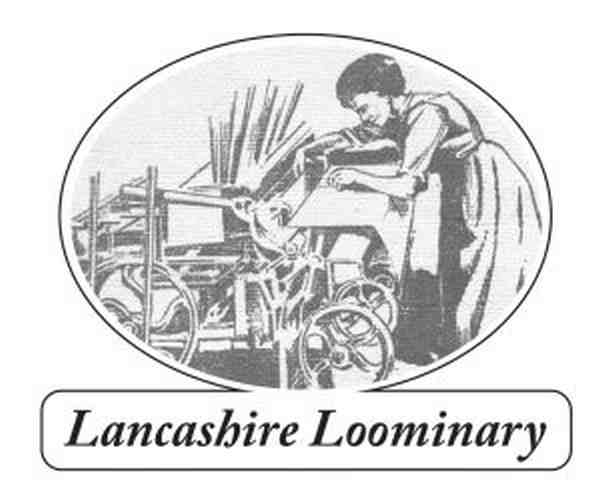
6 replies on “Northern Weekly Salvo 307”
Just a brief note that in many European countries the local station’s ticket office also sells coffee, rolls, snacks and so forth or, alternatively, a local store selling coffee, rolls, snacks etc. also has a sideline in serving rail tickets to the purchasing public. A postal counter as mentioned also makes a lot of sense, not to mention Tourist Information in places that deserve this! The logic is obvious – there is already ‘footfall’ and also people depüarting who may be forced to linger for longer than they intended due to delays, cancellations etc. and those arriving need a place to get information and maybe refreshments. . How many petrol stations these days sell only petrol?
just two questions relating to rail company ownership:
1. Is it right that profits are going abroad subsidising improvements in rail systems in other countries?
2 Have the foreign owned companies brought anything positive to the table?
I am a bit surprised such an avid supporter of the co-operative movement would be in favour of the current ownership model!
What makes you think I’m in favour of the current ownership model? All I said was that ownership in itself won’t solve all your problems. Northern is publicly owned and it’s not a model of perfection.Over the last ten years I’ve written numerous books and articles about how a social ownership model could form the basis for a better raiwlay, I’ve never said the current structure was right – it clearly isn’t. But just going back to the old BR isn’t right either!
Can’t agree that ‘Johnson’s reign (sic) wasn’t all completely bad’. Apart from a damagingly hard Brexit (still not done) what was there? Levelling up might have fooled some people but was never much more than a slogan. But what do you expect from a serial liar/serial adulterer who was a lazy & incompetent Foreign Secretary (I wonder what Nazanin Zaghari-Ratcliffe thought of him in this role)? Just a small selection of names & facts to remind readers of what Johnson is – Darius Guppy, Jennifer Arcuri, Petronella Wyatt, Anna Fazakerly, Dominic Cummings, Owen Paterson, Chris Pincher, skiving off 5 Cobra meetings in the early days of the Pandemic, ‘let the bodies pile high’, Partygate. I could go on but I rest my case. If the Conservatives take him back as leader they will be taking the p#!/ out of the country.
P S Grant Shapps not shunted into a siding but is Home Sec. Or had you written that bit beforehand?
Best place to get good Lancashire (and Stilton and pickles and chutneys and all things cheese) is Pat’s cheese stall on Chorley market 👍
I read your piece on Heywood with interest. I’ve only seen the place twice, first on a Southport-Rochdale train in 1962 (one of the daftest Beeching closures ever!) and in 1990 by car. I had been driving around Lancs & Yorks photographing the mill heritage when my car engine emitted a lot of steam and hot air in Heywood at 4.30pm on a wet dark Friday. A kindly car mechanic worked a couple of hours overtime that evening and saved damage to the engine; I gave him a generous tip before heading back to South Wales starting with the nightmare of crowded motorways in torrential rain before reaching the safety of the A449 south of Warrington and the oasis of a Little Chef (remember them!).
I’m currently writing a book on my travels around the British Isles which includes a piece on a journey back to the Industrial Revolution as it was in 1760 (aka the Oldham Loop in 1962)!!